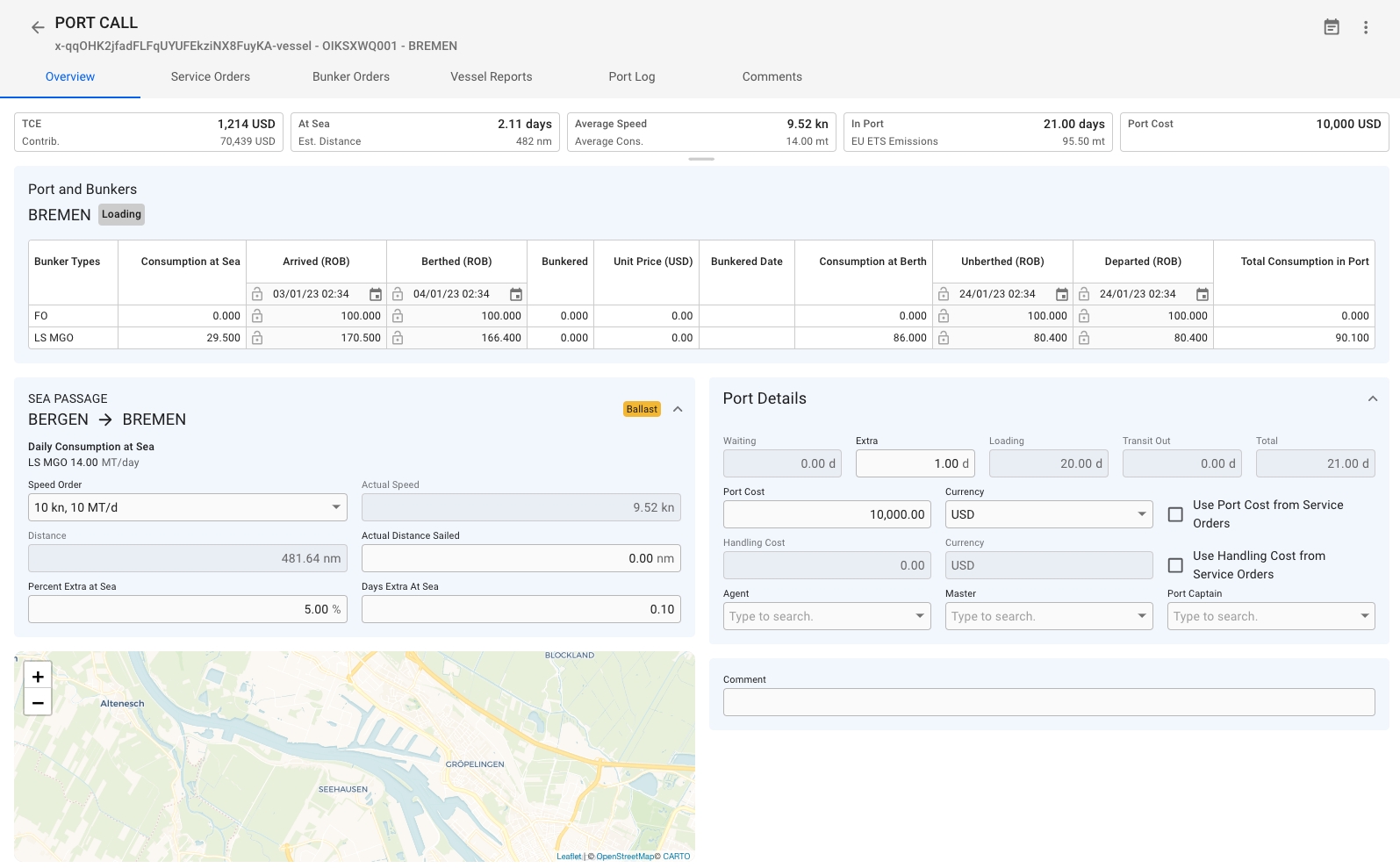Port Call Bunkers and Overview
You'll learn how to accurately track your remaining onboard fuel levels, have control of your per-leg fuel consumption, and find all vital information in one place.
You'll learn how to accurately track your remaining onboard fuel levels, have control of your per-leg fuel consumption, and find all vital information in one place.
Port call Overview can be found inside the Port Call module (see ref. 1):
The Overview tab is split into three essential sections: 1. Port and Bunkers; 2. Sea Passages; 3. Port Details;
This section provides a detailed insight into fuel consumption, including the calculation of remaining onboard fuel. It also features an overview of port call events (e.g., Arrival) with respective consumption and editable values (slightly darker background cells). ROB per event and respective dates can be altered or locked (by clicking the lock icon).
Example (ref. 1):
Bremen is the first port call on a voyage. The voyage has 100 MT of remaining onboard FO and 200 MT remaining onboard MGO fuel. The arrival event (ROB) contains a summary of remaining fuel, accounting for the consumption at sea (consumption between ballast/previous port call departure and current port call arrival): 100 MT of FO and 170.50 LS MGO. The same logic applies to future events (e.g., Departure ROB would correspond to Arrival ROB minus consumption in Port), further port calls, and even the next consecutive voyages.
Initial opening balances per bunker type can be added in the Voyage module, the Bunkers tab.
The Sea Passages section includes sailing-related port call data that can be modified.
This section provides an overview of the formal and financial sides.
The top row suggests the days-related information, answering such questions as 'How long are we in the port?', 'How much extra time has the vessel spent in port?', 'How much time did it take to Load/Discharge Cargo?', 'How long did the transit out take', and 'How many total days were spent in the port'.1
The second row contains the port cost-related data - port cost and currency, and a function to use the total of 'Our' port costs from Service Orders.
The third row is an overview of the handling cost for this port call. The two fields are always disabled and are only for information. When the checkbox is unchecked the handling costs is from the cargo port , if it checked the handling cost will be calculated from Service Orders instead.
